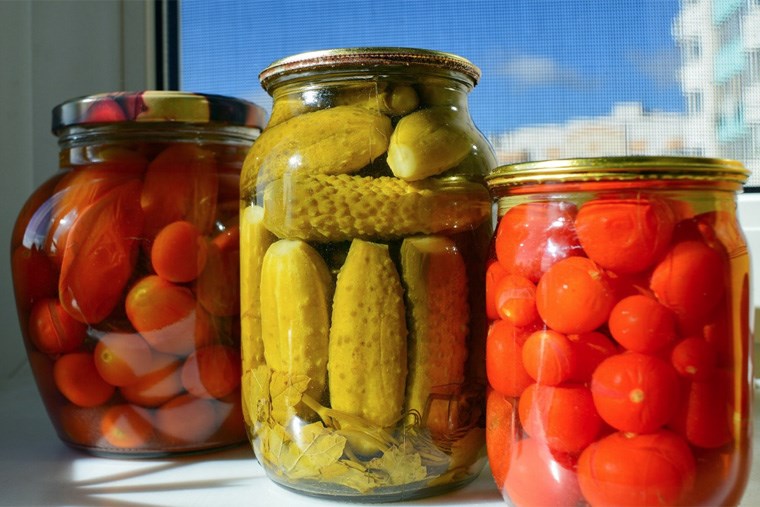You could reach for that bag of chips, but why not choose a healthier alternative? In fact, why not get creative and make your own pickles?
Pickling goes back thousands of years. It was an early way to preserve food, boost nutrition, and simply increase flavours. When you reach for crunchy pickles instead of chips, you benefit from the produce’s natural antioxidants, vitamins and minerals. Even the pickle juice can be good for you, as it is known to boost hydration, ease muscle cramps, boost gut health, and help control blood sugar.
It’s not difficult to make pickles. Fridge pickles are just a matter of putting the produce into a brine. You can do a quick pickle a few hours before dinner to have these treats ready for your burgers or Bánh mì, but the longer your pickles sit in the brine, the more intense flavour you’ll get. While you could make pickles with hot water processing, it’s not strictly necessary. In fact, sometimes the hot water bath makes the vegetable a little soft, which may not be your desired texture. However, whether you prefer a hot water processed or fridge pickle really comes down to personal preference. Both are tasty and have health benefits.
Shirley’s Greenhouse, a 36,000 square foot facility that provides fresh garden produce along with hand made chow chow, relish, pickles, and salsa, has generously shared a brine recipe for making a large batch of bread and butter pickles, which they make using the hot water bath method.
To make the brine, combine:
- 12 cups vinegar
- 6 cups water
- 9 cups sugar
- 6 tsp mustard seed
- 9 tsp turmeric
- 3 tsp celery seed
If you are more interested in fridge pickles, which don’t keep as long but can have you noshing on your treats within a few hours, just remember these tips:
- Gently heat your water with the salt and/or sugar so you can completely dissolve the salt/sugar. Cool the mixture before adding the rest of your ingredients.
- Don’t heat your vinegar solution in an aluminium, copper, or cast iron pan. These materials react poorly with acids.
- Use a heat resistant glass jar or suitable container where the brine will completely cover your produce.
- You can eat your fridge pickles within a few hours, but 24 hours and beyond is best.
This summer as you visit your local gardens and farmers markets you’ll find crisp cucumbers, sweet onions, crunchy carrots, tart cherries, and more. These are great fresh, but for a crisp treat, try pickling! Whether you prefer the hot or cold method, it’s a fast, easy, and affordable way to add more garden goodness to your diet.
 This story was made possible by our Community Partners Program. Thank you Shirley's Greenhouse for helping to expand local news coverage in Alberta. Learn more.
This story was made possible by our Community Partners Program. Thank you Shirley's Greenhouse for helping to expand local news coverage in Alberta. Learn more.


